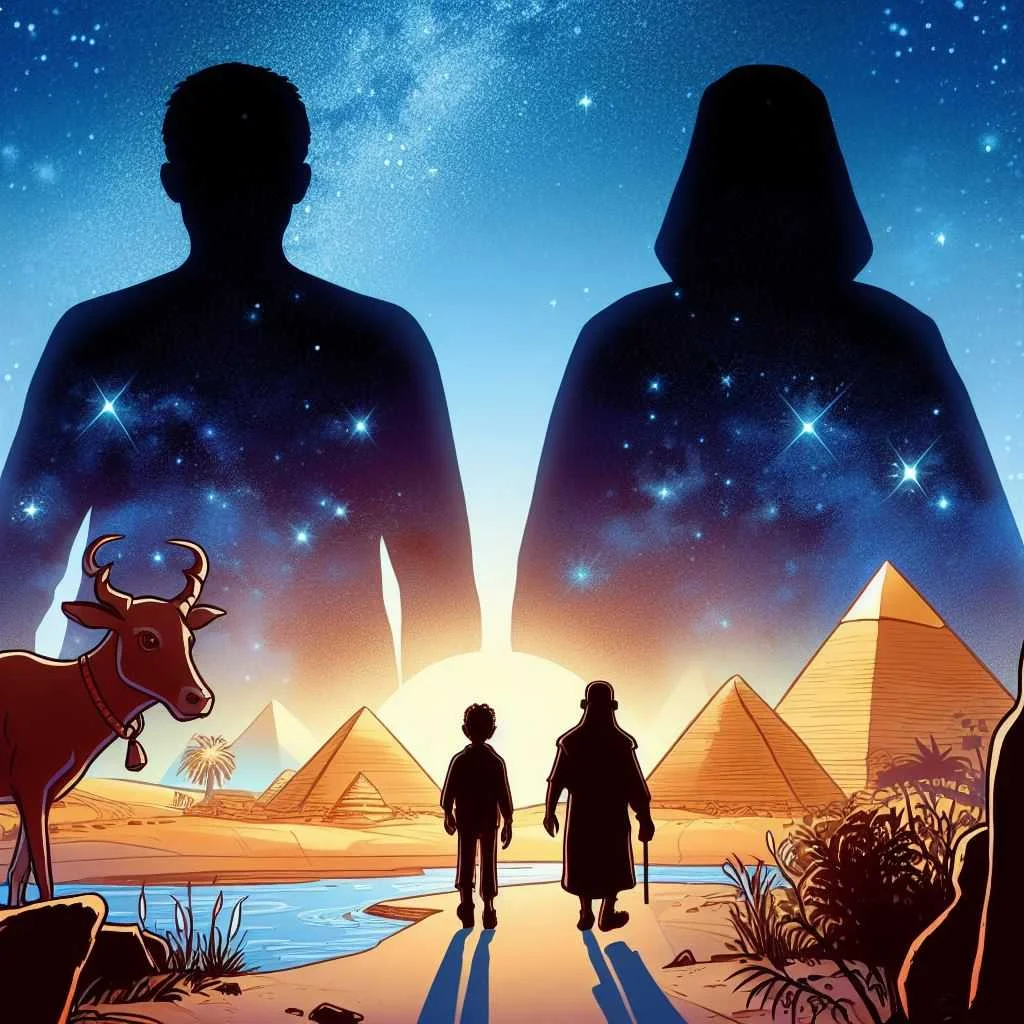Once upon a time, in the lush Nile delta, there lived two brothers. Anpu, the elder, was married and lived in a large house with many fields. He loved his younger brother, Bata, who lived with him and helped him farm the land.
Bata was not only skilled in the ways of agriculture but also was blessed by the gods with a gift: when he spoke to the seeds, they grew; when he tended to the animals, they prospered. The brothers were close, and Anpu trusted Bata with all his heart, treating him as his own son.
However, Anpu’s wife grew envious of their bond and of Bata’s gifts. She attempted to seduce Bata, who, being honorable and loyal to his brother, rebuffed her advances. Spurned and spiteful, she accused Bata of trying to seduce her, igniting Anpu’s wrath.
Bata, innocent yet condemned, fled to the mountains to escape Anpu’s anger. There, he was granted a magical cow by the god Khnum, which could transform into a beautiful woman. Bata lived in solitude, his heart heavy with the loss of his brother’s trust.
The story would twist and turn like the river Nile itself, leading Bata through trials of magic, transformation, and ultimately, reconciliation. Anpu, after discovering the truth about his wife’s deceit, searched for Bata to ask for forgiveness.
In the end, the gods revealed Bata’s innocence to Anpu, and the two brothers were reunited. Bata became renowned and loved by the people, eventually ascending to the throne, with Anpu by his side, both wiser and closer than before.
Read Next: Henny Penny
Moral of the story
The bond of brotherhood, like the eternal river, can weather the storms of betrayal and emerge stronger, purer, and more enduring.
Background of the Story
“The Tale of Two Brothers” is an ancient Egyptian story from around 1185 BCE, during the reign of Pharaoh Seti II. The author is unknown, as is the case with most literature from antiquity.
The story is part of the Egyptian literary canon and was found in the form of a hieratic papyrus now known as the Papyrus D’Orbiney, which is currently housed in the British Museum.
The tale was likely passed down orally before it was transcribed by scribes who worked in temples or for the royal court.

